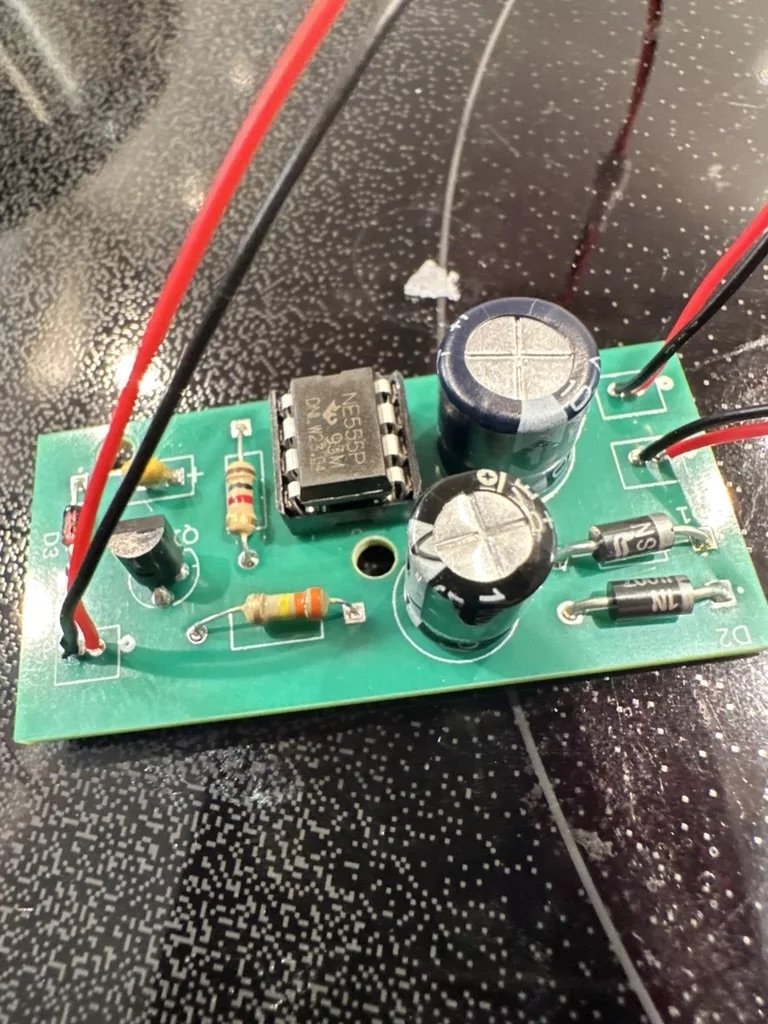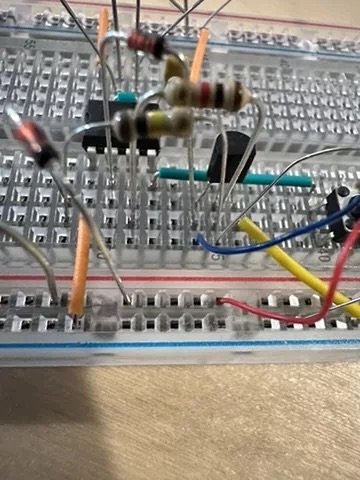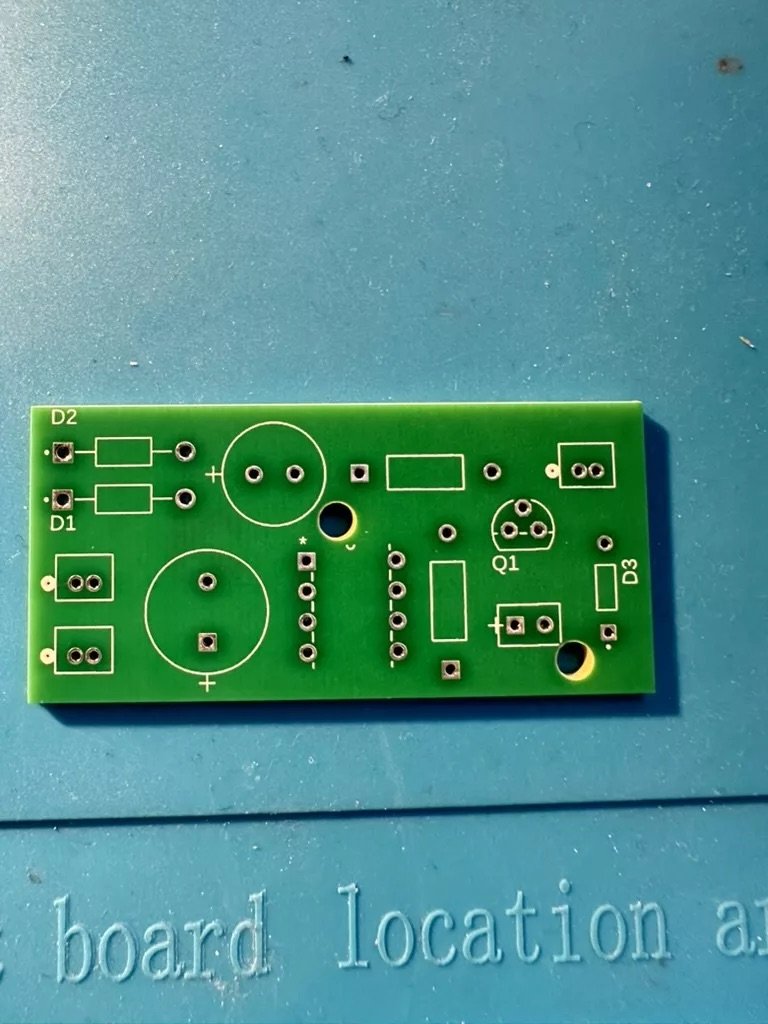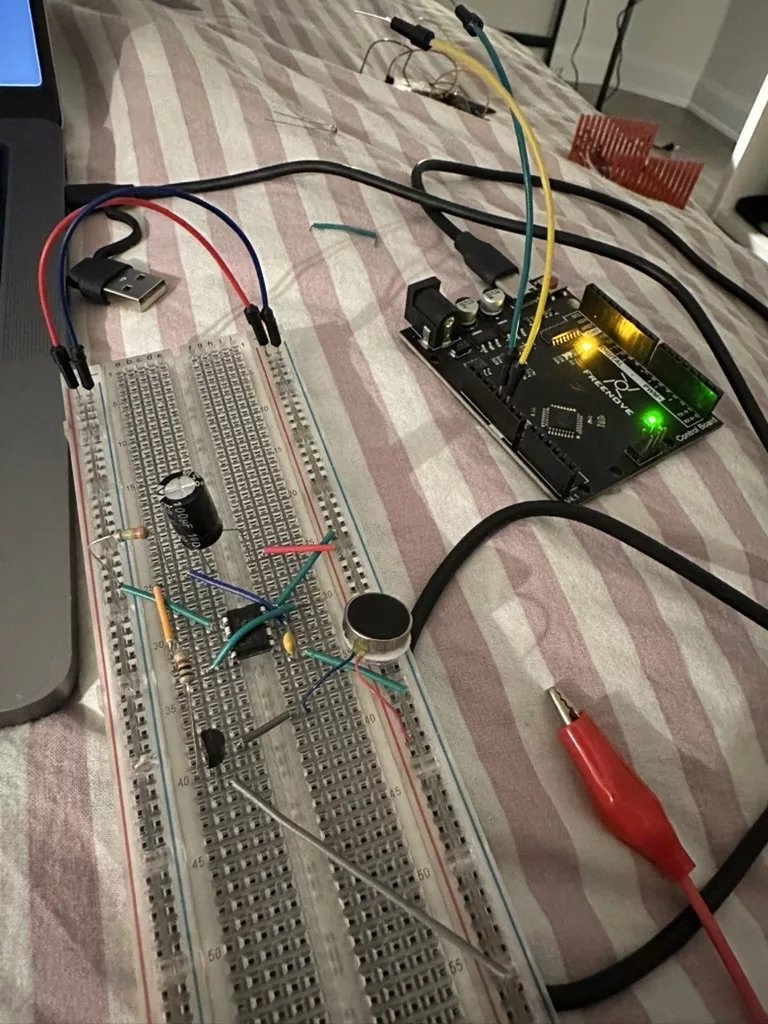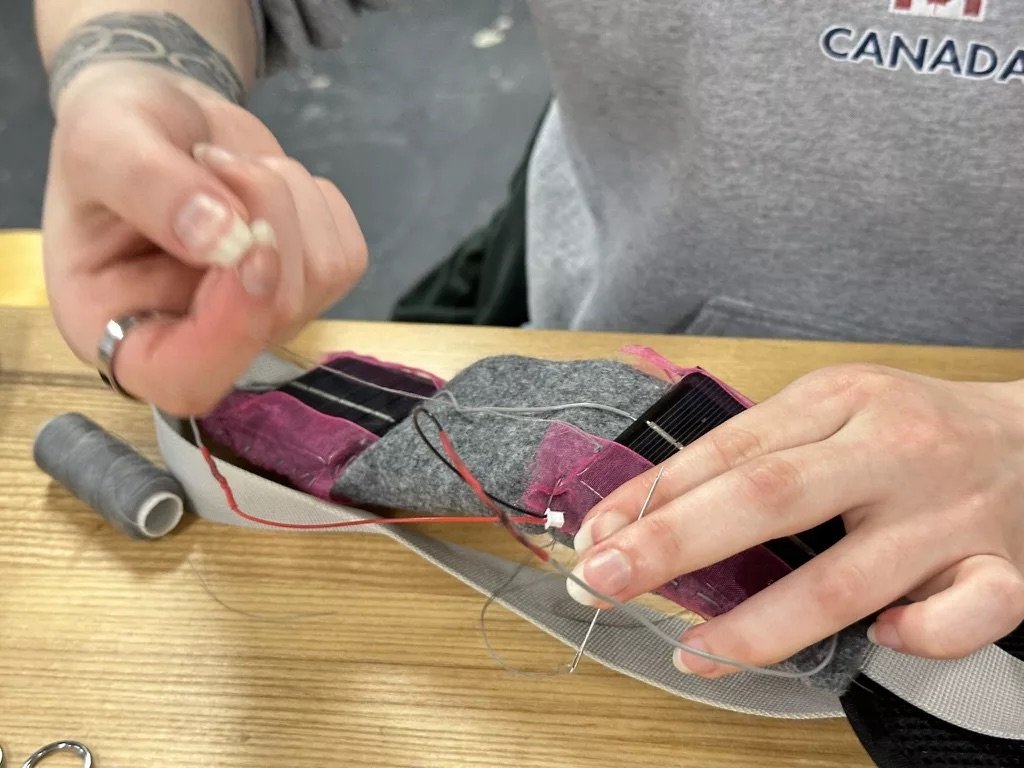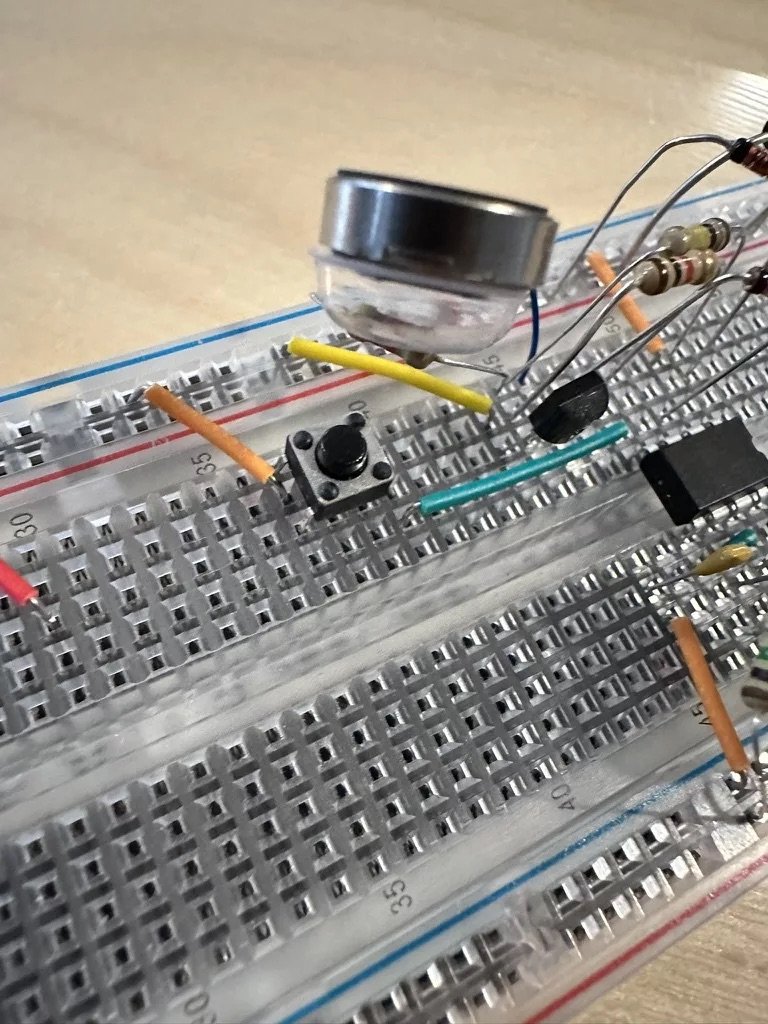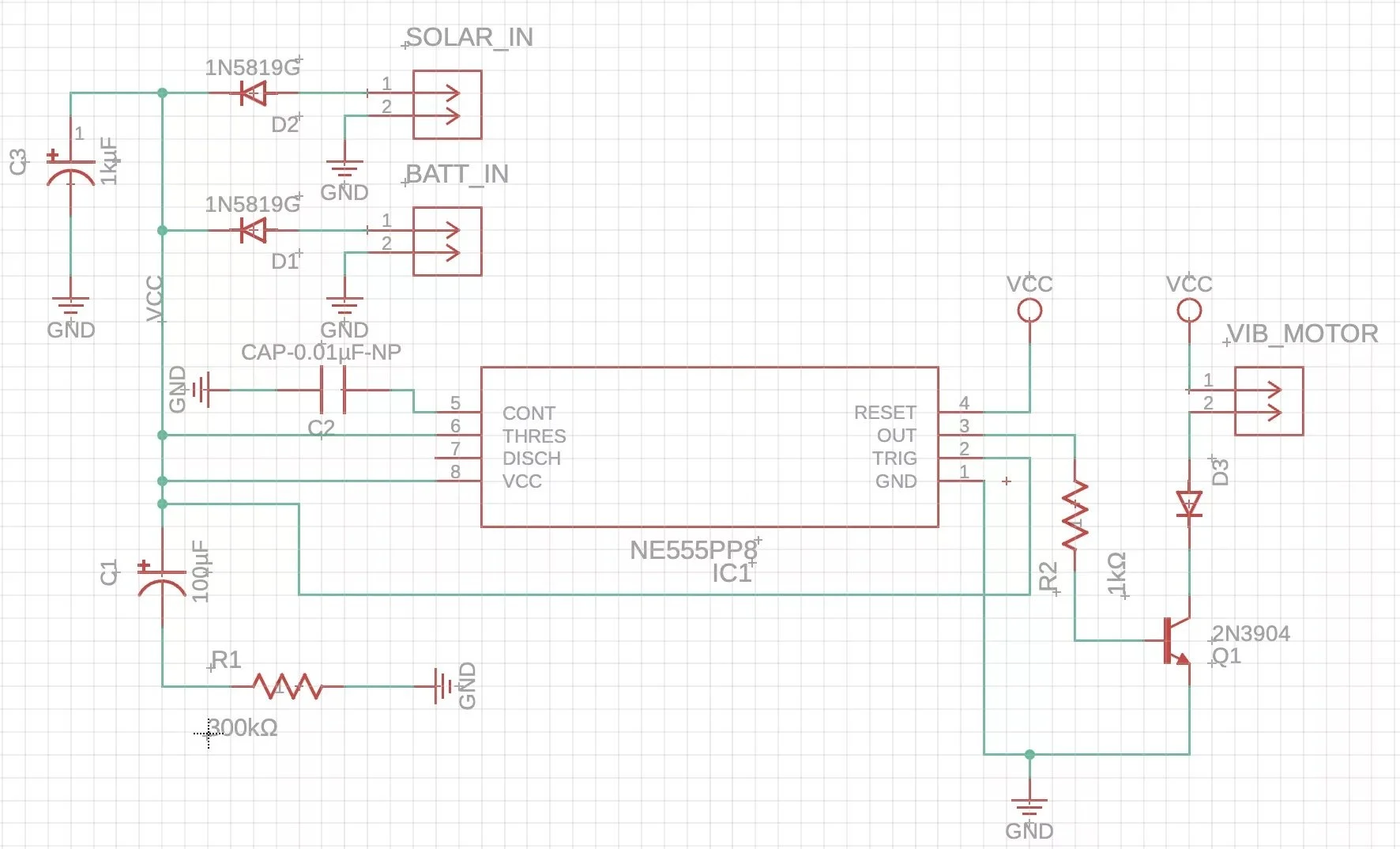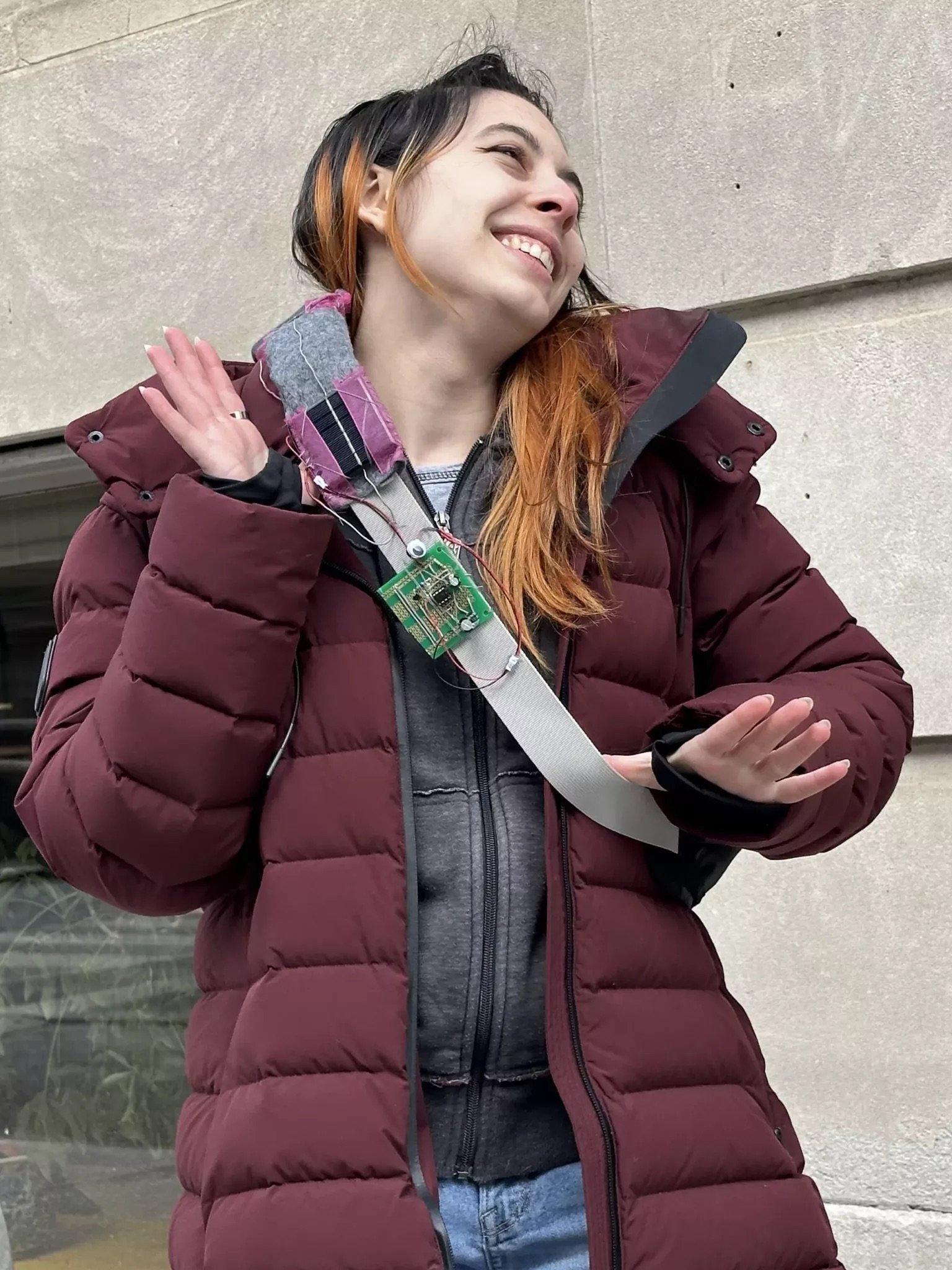
The Excess Solar Wearable
April 2025, By Arjun Mahajan and Luciana Gomes
The Excess Solar Detector captures solar power. After charging the capacitors, it emits a vibration through the motor to notify the person wearing it that they have spent enough time under the sun.
It serves as a warning for days when sunlight is strong and UV rays are too intense—reminding the user to apply sunscreen, which is easily accessible through the pocket feature included in the design.
The solar panels are located on the shoulder area to capture solar energy better and have a better notion of how intense it is and when to warn the user safely.
Schematic Diagram
This project is a solar-powered sunscreen reminder system that uses a simple analogue circuit. A solar panel charges an RC (resistor-capacitor) circuit over time based on sun exposure. As sunlight increases, the capacitor gradually charges until it reaches a set threshold voltage. Once this voltage is high enough, it triggers a 555 timer configured in monostable mode. The 555 timer then sends a short pulse to activate a transistor, which powers a small vibration motor. The vibration alerts the user that they’ve been exposed to sunlight for a prolonged period and it’s time to reapply sunscreen. This solution is fully analogue, low-power, and self-sustained — making it ideal for wearable, eco-friendly sun safety.
How does it relate to the Criteria for Photovoltaic Art & Design?
This project related to the criteria by using PV as a sensor, that later would be used to trigger the motor, alerting the person wearing it about sunlight exposure. The design of the wearable itself is also made with the intent to relate to the use of solar power. Given that it is designed to be comfortable to use, as well as have the additional functionality of having a “pocket” that can be used to carry sunscreen or even a water bottle. Both are important while out in the sun and give a new meaning to the project itself. So the trigger could be interpreted as the right time to apply sunscreen, or even to go to a shaded area and hydrate.

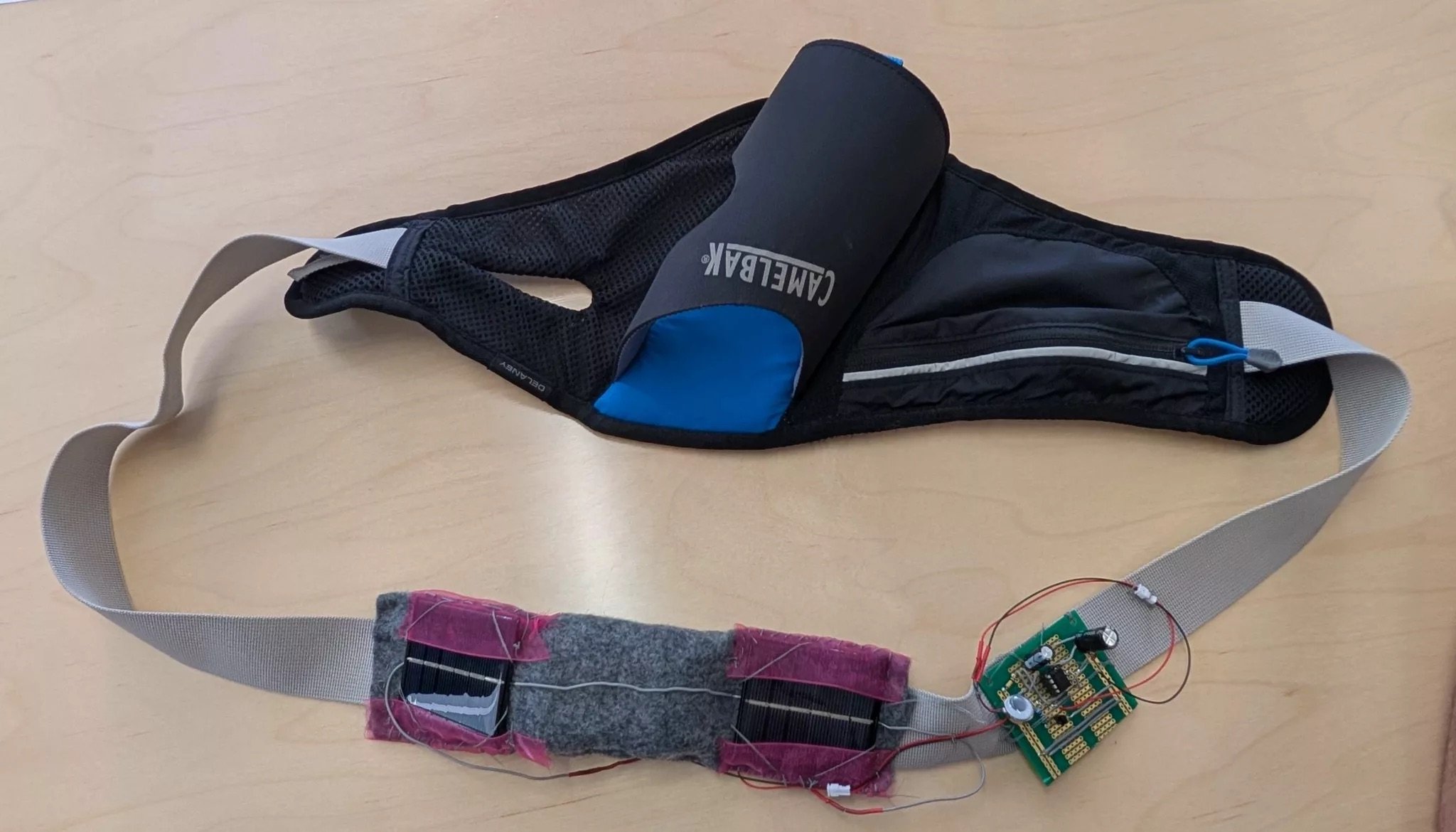
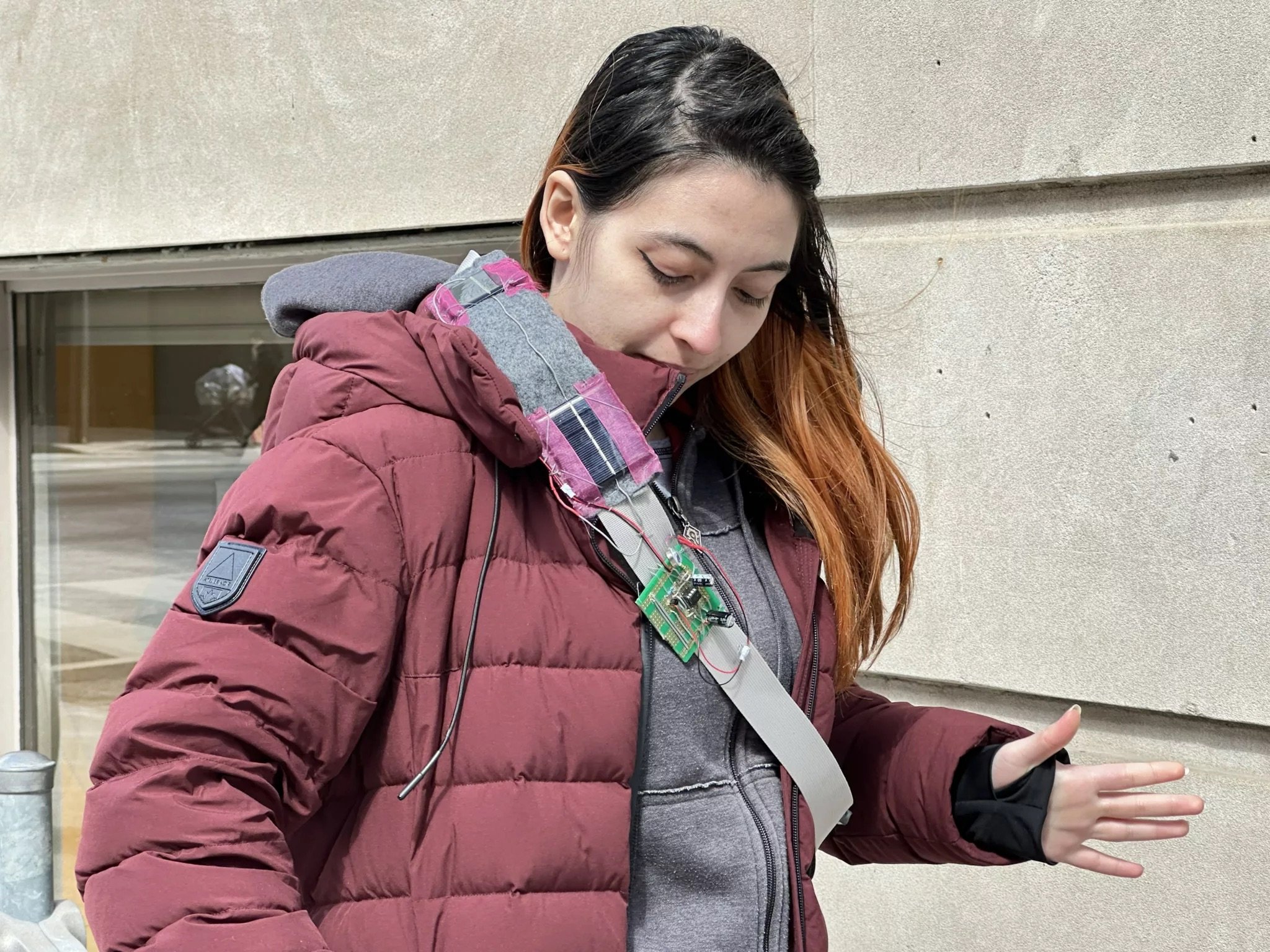
Prototype and Concept
Our main inspiration for this project was the data revealing that most people don’t wear enough sunscreen. In Canada, most people are vitamin D deficient due to weather conditions throughout the year. According to Health Canada, there are many measures to achieve the needed amount of vitamin D daily. However, it is hard to truly measure it while still trying not to spend too much time in the sun, which can be harmful. This was a key point to be considered when we were exploring the possibilities of this project, in making people’s lives easier and also making sure they are safe.
Another main idea of this project was to help people protect themselves against harmful UV rays from the sun. Most people do not wear enough sunscreen, either, and in the long run, this can cause severe skin damage. Further research by the American Cancer Society confirms this as well, which states how to prevent skin cancer, which was a targeted area of this project.
